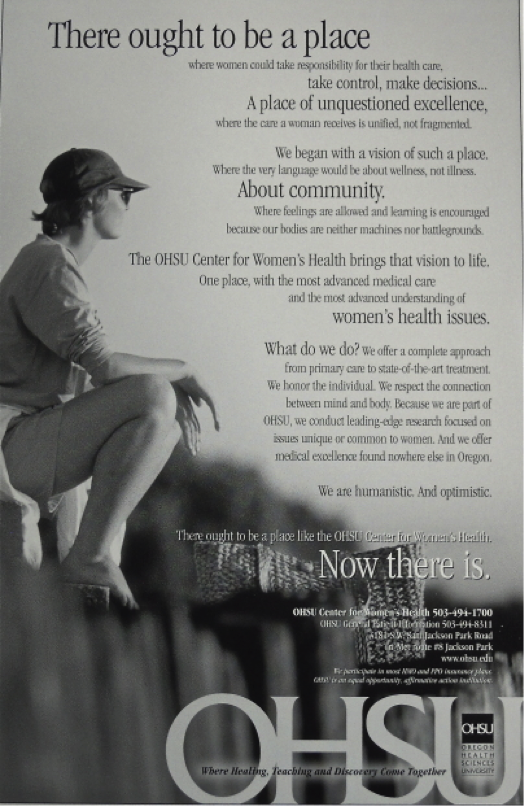The Anti-Manifesto Manifesto
Early in my career, I was enlisted in the job of moving 5,000 small foam dolphins. We had ordered them as a trade show giveaway for one of our clients without giving much thought about where we’d store them. When the boxes arrived at the office, several of us pitched in to move them. But to where? “There ought to be a place,” I said. Then, realizing I had the headline I’d been looking for, I abandoned my dolphins and went back to my desk.
The result was the first manifesto-style ad I ever worked on. We created it for the OHSU Center for Women’s Health – which at the time, didn’t exist.
We did the ad for a small group of visionary women who were advocating for a center focused exclusively on women’s health. In those early days, they had nothing but a concept and their own enthusiasm. To build momentum, they asked us to create something they could show to potential supporters.
There was no media budget for the ad because it was never intended to run anywhere. Rather, it was shared at meetings, passed hand to hand, eventually ending up on the wall of their first tiny office. As an example of what could be, it helped encourage others to share the dream. Which was the whole point.
My point in telling this story is a little different. Our manifesto ad was written in the late 1990s. This was five years before Kaiser and Allison Janney came out in favor of broccoli and antioxidants in one of the best-known manifesto ads of the era. Even so, our ad was by no means the first of its kind. In using this style, we were following a path that was already well established.
In the intervening 15+ years, the manifesto ad has moved from print to TV. These days, it’s used to promote practically everything – cars, insurance, beer, jeans, you name it. It’s an ad form that, according to me and some other observers, is overused and possibly past its freshness date.
The folks at Dissolve.com certainly get it. They created this viral video to mock manifesto ads while promoting their stock footage service.
That’s not to say that the manifesto style should never be used. If it serves a purpose, go ahead and do it. Make it good. Just be sure you’re following a strategy and not just following the crowd.
Today, by the way, there is a place. The OHSU Center for Women’s Health is the only designated National Center of Excellence in Women’s Health in the Northwest. We’re proud to have played a small role in helping to get it started.

